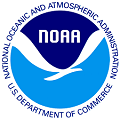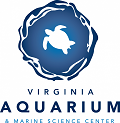The Duke Marine Geospatial Ecology Lab developed a set of density surface models for 31 marine mammal species and multi-species guilds for the U.S. Navy's U.S. East Coast study area. These models replace Phase III models completed in 2016 and published as Roberts et al. 2016. Phase IV models were built using aerial and vessel-based line-transect survey data provided by 11 institutions who collectively 2,985,700 linear km of aerial and 111,900 km of shipboard survey effort. We summarized predictions over 5x5 km grid cells from 12 models into monthly climatological density surfaces, 18 models into year-round density surfaces, and 1 model—Atlantic spotted dolphin—with a “mixed” scheme, in which the continental shelf was summarized monthly and area beyond the shelf was summarized year-round. This work was funded by the U.S. Navy to assist with complying with U.S. laws that require the Navy to assess the potential impacts to protected marine species resulting from military readiness activities.
NOAA Southeast Fisheries Science Center (SEFSC) developed a set of density surface models (SDMs) for 19 species and multi-species guilds for the Gulf of Mexico. Models were developed for species occupying continental shelf and oceanic waters of the Gulf of Mexico using survey data collected during the Gulf of Mexico Marine Assessment Program for Protected Species (GoMMAPPS) project and comparable-prior-year surveys. Survey data were used to develop SDMs for cetacean and sea turtle species. For each modeled taxon, predictions were made for the period 2015-2019 on a 40 km2 hexagon grid, summarized into mean monthly densities for the 5-year period, and then resampled into traditional raster grids. The prior series of Gulf of Mexico models were produced by a collaboration between the Duke Marine Geospatial Ecology Lab (MGEL) and SEFSC and published as <a href="https://www.nature.com/articles/srep22615">Roberts et al. 2016.</a> As of October 2022, SEFSC and MGEL consider the Roberts et al. 2016 models obsolete and recommend the GoMMAPPS models available here be used instead.
Marine mammals are protected worldwide but vulnerable to incidental harm from an expanding array of human activities at sea. The U.S. Navy takes responsibility for reviewing and evaluating the potential environmental impacts of conducting at-sea training and testing operations, and performs quantitative analyses that require estimates of species density — the number of individual animals found per square kilometer of area. For each marine mammal and sea turtle species present in their study areas throughout the Pacific Ocean and Gulf of Alaska, the Navy uses the best available region- and species-specific density data to support their quantitative impact analyses, and produces maps that show average density across these regions.
The Marine-life Data and Analysis Team (MDAT) is comprised of the Marine Geospatial Ecology Lab (MGEL) of Duke University, the NOAA National Centers for Coastal Ocean Science (NCCOS), the NOAA Northeast Fisheries Science Center (NEFSC), The Nature Conservancy (TNC) and Loyola University Chicago. MDAT works with regional ocean data portals, councils, and stakeholders to characterize and map marine life along the US Atlantic Coast. MDAT collaborations have produced individual species or species guild products for over a hundred species across three taxa: marine mammals, avian species, and fish species. MDAT also provides summary products that are built upon the individual species data layers to allow quick access to map summaries about potential biological, management, or sensitivity groups of interest. Types of summary products include total abundance or biomass, species richness, and species diversity indices that can aid the user in seeing broad patterns in the underlying data or model results.
Cetaceans are protected worldwide but vulnerable to incidental harm from an expanding array of human activities at sea. Managing potential hazards to these highly-mobile populations increasingly requires a detailed understanding of their seasonal distributions and habitats. Using distance sampling methodology, we built statistical models of cetacean density—the number of individual animals found per 25 square kilometer and produced maps showing average density across the modeled region.
Loggerhead turtles (Caretta caretta) are a globally vulnerable species of marine turtle. The Mediterranean Sea subpopulation, which ranges throughout the entire Mediterranean basin, is listed as least concern by the International Union for the Conservation of Nature (IUCN), but experiences significant threats in the region including bycatch in fisheries, climate change, coastal development, and marine pollution. Broad-scale patterns of distribution and abundance can provide regional managers a tool to effectively conserve and manage this species at basin and sub-basin scales.
The United States (U.S.) Navy requires spatially explicit estimates of marine species distribution and abundance to assess impacts associated with training and testing activities in the waters of the U.S. east coast. Four species of turtle can commonly be found on the U.S. east coast, the green, Kemp’s ridley, leatherback, and loggerhead turtles. All four species are listed under the Endangered Species Act (ESA). Assessments consider marine species listed under applicable US domestic laws, such as the ESA. The Navy identifies spatial density models as the best available science for estimating abundance and distribution of these species.
The Duke Marine Geospatial Ecology Lab developed a set of density surface models for 11 species and multi-species guilds for the U.S. Navy's Arctic study area. Models were initially developed in 2017, and then updated in 2020. Models were developed using data from the Marine Mammal Lab's Aerial Survey of Arctic Marine Mammals (ASAMM), the Bowhead Whale Aerial Survey Project (BWASP), the Chukchi Offshore Monitoring in Drilling Area (COMIDA) surveys, and aerial surveys of the Canadian Beaufort Sea and Amundsen Gulf contributed by Fisheries and Oceans Canada (DFO). The final predictions cover the period 2000-2019 for the months of June-October, and predictions were summarized into climatological grids giving mean density for each of those months across all years. This work was funded by the U.S. Navy to assist with complying with U.S. laws that require the Navy to assess the potential impacts to protected marine species resulting from military readiness activities.
As human activities expand beyond national jurisdictions to the high seas, there is increasing need to consider anthropogenic impacts to species that inhabit these waters. The current scarcity of scientific observations of cetaceans in the high seas impedes the assessment of population-level impacts of these activities. The U.S. Navy Atlantic Fleet Training and Testing (AFTT) Study Area extends from a well-surveyed region within the U.S. Exclusive Economic Zone into a large region of the western North Atlantic sparsely surveyed for marine mammals. The Duke Marine Geospatial Ecology Lab developed a set of density surface models for 30 species and multi-species guilds for the AFTT study area. These models replace Phase III models completed in 2016 (Mannocci et al. 2017). For the Phase IV analysis, our collaborators collectively contributed over 3.2 million linear kilometers of line-transect survey effort—nearly 3 times that of the Phase III analysis—collected across 1992-2020, from which the models were built. We summarized predictions over 10x10 km grid cells from 12 models into year-round density surfaces, three models into seasonal density surfaces, and 2 models into monthly climatological density surfaces. This work was funded by the U.S. Navy to assist with complying with U.S. laws that require the Navy to assess the potential impacts to protected marine species resulting from military readiness activities.







